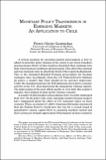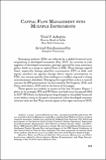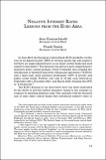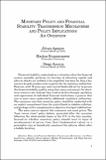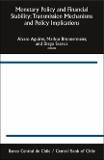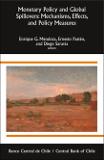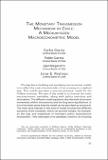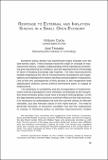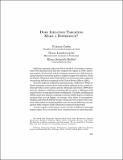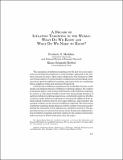Buscar
Mostrando ítems 91-100 de 132
Monetary policy transmission in emerging markets: an application to Chile
A critical question for emerging-market policymakers is how to adjust to monetary policy changes in the center. A core tenet of modern macroeconomic theory is that countries should let their exchange rate float when financial conditions abroad change. This allows the nominal and real exchange rates ...
Capital flow management with multiple instruments
Emerging markets (EMs) are affected by a global financial cycle originating in developed economies (Rey 2013). An increase in risk appetite of developed economies perhaps spurred by easy monetary policy leads to a surge in capital flows to EMs. These foreign capital flows especially foreign portfolio ...
Negative interest rates: lessons from the Euro area
In June 2014 the European Central Bank (ECB) decided to cut the rate on its deposit facility (DFR) by 10 basis points (bp) into negative territory an unprecedented move as no major central bank had used negative rates before. This decision was part of a more comprehensive monetary policy easing package ...
Monetary policy and financial stability: transmission mechanisms and policy implications: an overview
Financial stability understood as a situation when the financial system smoothly performs its function of allocating capital and adverse shocks are unlikely to be amplified has been for long a key concern for policymakers and in particular for monetary authorities. However until 10 years ago most ...
Monetary policy and financial stability: transmission mechanisms and policy implications
The global financial crisis that broke out 10 years ago uncovered the buildup of risks during a period of price and output stability. It challenged the previous consensus that preserving price stability was the optimal way to ensure financial stability, and led to a surge of interest in the multiple ...
Monetary policy and global spillovers: mechanisms, effects and policy measures
Central Banks in emerging markets have been forced in the last decade to deal with spillovers from the crises in the United States and Europe and from the extraordinary measures respectively taken by the Federal Reserve and the European Central Bank. This volume provides a comprehensive study of the ...
The monetary transmission mechanism in Chile: a medium-sized macroeconometric model
The objective in building and specifying macroeconomic models is to reflect the main characteristics of an economy in a stylized way. This article describes a macroeconometric model for the Chilean economy. The aim of the model is to forecast the main macroeconomic variables, along with policy exercises ...
Response to external and inflation schocks in a small open economy
Monetary policy design has experienced major changes over the last twenty years. These changes had their origin in changes in macroeconomic theory, a better understanding of the importance of achieving and maintaining low inflation, and the abandonment of fixed pegs in favor of floating exchange rate ...
Does inflation targeting make a difference?
Inflation targeting is the new kid on the block of monetary regimes. Since New Zealand and Chile first adopted the regime in 1990, a growing number of industrial and developing countries have followed suit, anchoring their monetary policy to explicit targets for inflation.
A decade of inflation targeting in the world: what do we know and what do we need to know?
The emergence of inflation targeting over the last ten years represents an exciting development in central banks' approach to the conduct of monetary policy. After initial adoption by New Zealand in 1990, a growing number of central banks in industrial and emerging economies have opted for inflation ...

